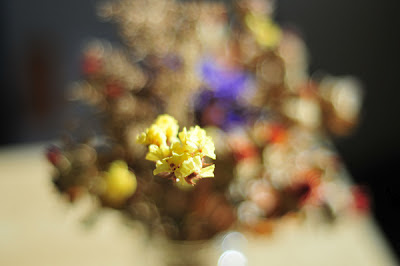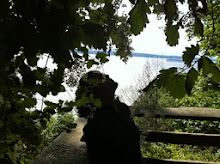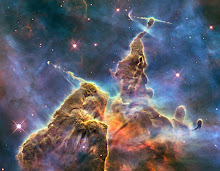Last years flowers sit in a
mason jar by the desk side. A drop of sunshine falls on the elegant decay and
fractures into tiny fragments. For a brief moment in time bits of light get
caught between the frail stems and the brittle petals. Everything is subsumed
by this burst of light and matter.
It is 1988. Miquel Barceló is
in Africa. It is his first trip. In his studio in Mali he is studying light. He
is drawing shadows. “The light in the desert is so intense that the things
disappear, and the shadows are more intense than the things themselves…What
isn’t has more intensity that what is. Because in Africa light isn’t colour.
Light is much more stronger than colour. Colour is almost corroded by the
light.”* In the night he paints the river. Scratching the paper to obtain the
effect of light reflecting from the water. The foam still white in the thick
African night.
Barceló is concerned with the
passage of time. The tomatoes, the
melon, the skulls, the river, his friends– time spares no one. Each is captured
in a state of inevitable transformation. In his studio back home flowers placed
in a jar are slowly decomposing over time and the consummate artist doesn’t
miss a thing. Back in Africa the
elephants herd is slowly moving towards the river while the skulls in the
studio, with their motionless eyes, wait for the sun to go down.
Afterword: Einstein's theory
of relativity states time and space aren't as constant as they appear. The only
true constant is the speed of light. Time can seem to run faster or slower
depending on how high you are, and how fast you are travelling. That's bad news for those who own a penthouse.
*‘The earthly cycles’ by
Enrique Juncosa (An essay from Miquel Barceló: works on paper 1979-1999).
You can see Miquel Barceló's
art at his fan site here. To see his paintings from Mali click the year 1988 and scroll down the page.






















No comments:
Post a Comment